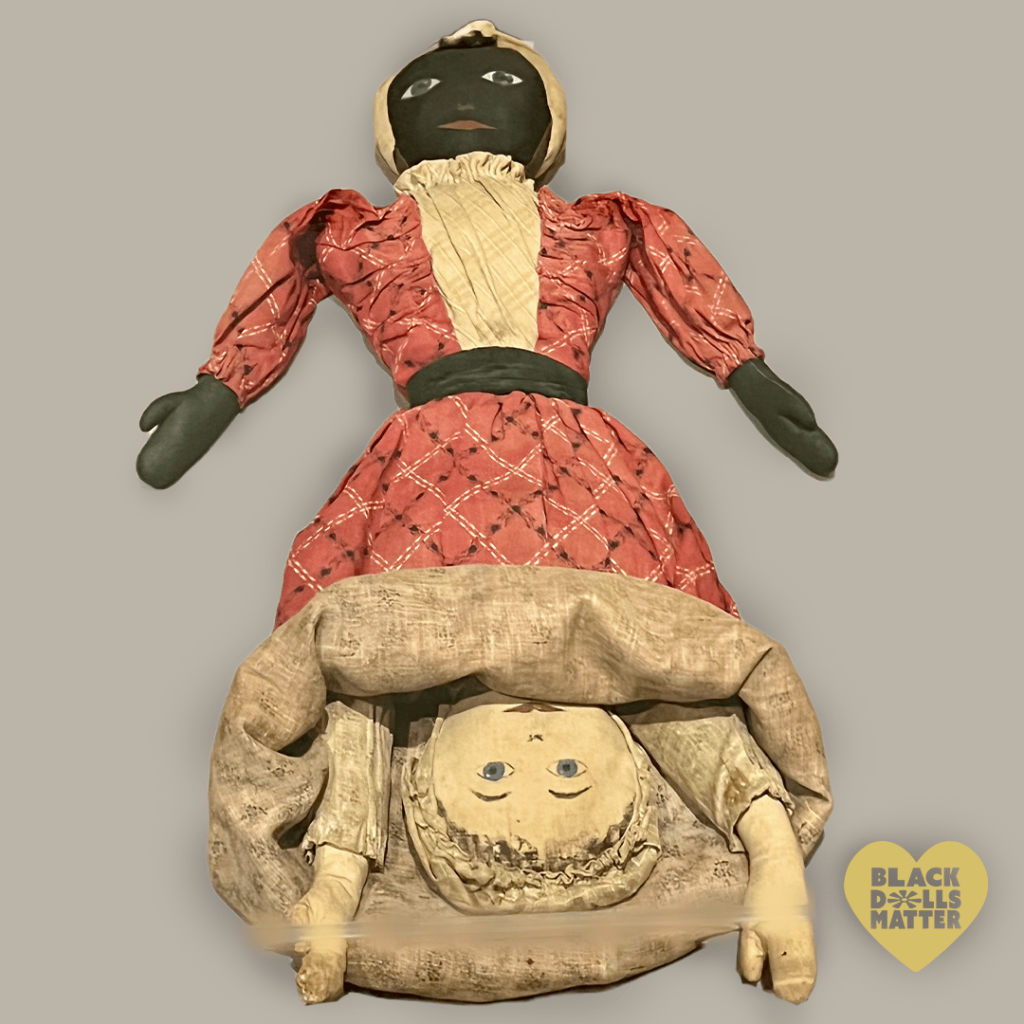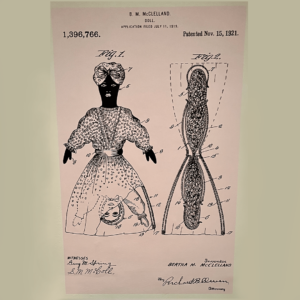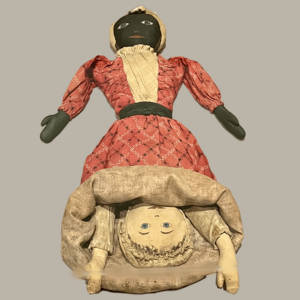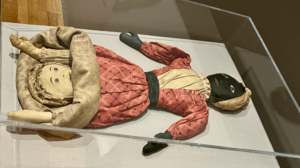
Topsy-Turvy doll from the Deborah Neff Collection photograph Black Dolls Matter®
Everything is Upside Down
Topsy-Turvy Dolls, also known as reversible dolls, have a long-standing tradition dating back to the late 1800s. These unique dolls showcase two characters, frequently a black and white character, that are joined at the waist and can be flipped over to reveal the alternate character.
The first Topsy-Turvy Dolls were created in Germany in the late 1800s, made from bisque porcelain and renowned for their intricate details and clothing. These dolls were highly sought after by both children and collectors and frequently used as educational aids to impart knowledge about different cultures and races.
During the early 1900s, Topsy-Turvy Dolls were produced in the United States, made from celluloid plastic, and were more accessible and durable than bisque dolls. These dolls gained immense popularity among children and collectors alike and were often employed as teaching tools to enlighten people about various cultures and races.

Topsy Turvy doll patent from the Black Dolls Exhibit at New York Historical Society. photograph Black Dolls Matter®
In the early 1900s, Japan also embraced the trend of Topsy-Turvy Dolls, constructed from materials such as wood and cloth and often brightly colored with intricate patterns.

Topsy-Turvy doll from the Deborah Neff Collection photograph Black Dolls Matter®
However, Topsy-Turvy Dolls lost popularity in the 1950s and 1960s as other types of dolls became more popular among children. Despite this, there has been a recent resurgence of interest in these dolls among collectors and those intrigued by their historical significance.

Topsy-Turvy doll from the Deborah Neff Collection photograph Black Dolls Matter®